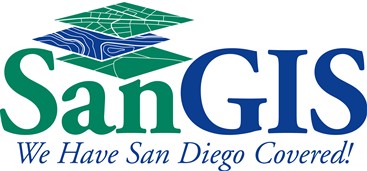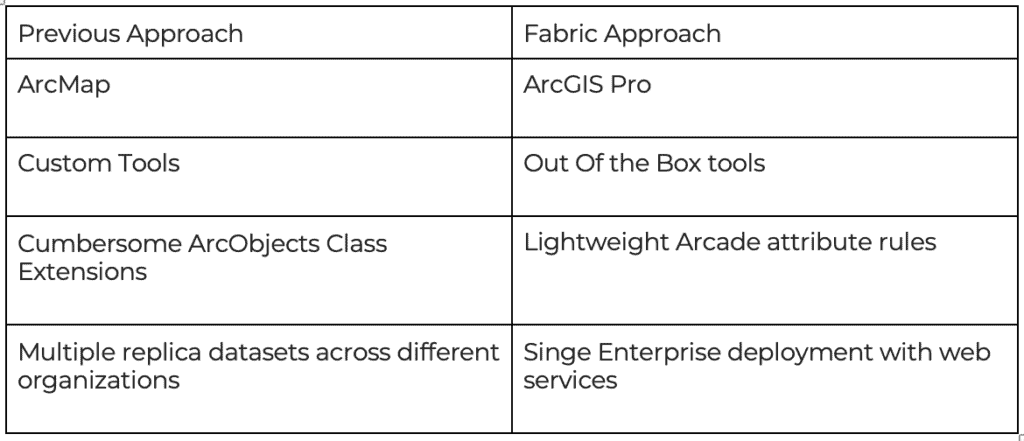Working Together
Have you ever realized that the land you live in is being measured, mapped, and maintained by someone? The San Diego Geographic Information Source (SanGIS), a Joint Powers Authority (JPA), was able to improve processes used for maintaining the regional geographic information system (GIS) by implementing Esri’s current Parcel Fabric and ArcGIS Pro editing tools. GIS land records in the San Diego Region are maintained by SanGIS joint powers agency.
The SanGIS mission is to maintain and promote the use of a regional geographic data warehouse for the San Diego region and to assist in developing shared geographic data and automated systems that use that data. SanGIS allows the City and the County to combine resources to meet common objectives, reduce duplication of efforts, maximize resources, provide an efficient method of sharing information, and provide timely updated data to the public.
Land Base Maintenance

The combined County and City of San Diego’s geospatial land base is massive. The dataset comprises over 17 data layers, including lots, parcels, roads, addresses, and open space easements. GIS Database maintenance, including additions, deletions, and updates, are made by 4-5 full-time editors. Having a trained editor team enables the region to have the most updated land base possible.
SanGIS was formed in 1997 and is responsible for the maintenance of
- 1.2m APM Records
- 600,000 Lots
- 28,000 easements
- 130,00 road segments
The Project Team
SanGIS decided it was time to update the GIS maintenance environment to a new solution, enabling more effective workflows and streamlined editing. Quartic Solutions, a woman-owned Esri business partner and premier GIS services firm was chosen and tasked with migrating 20 years of legacy code, tools, and data integrity checks to a brand-new environment. Quartic and SanGIS have worked together for many years on various GIS projects in the San Diego region.
A Dated System
SanGIS was using a GIS editing environment developed in early 2000. While the legacy system was stable, it lacked current ArcGIS Pro functionality, and there was a desire to improve consistency and communication. The old editing system consisted of stand-alone feature classes with their topology rules. A mixture of ArcObjects Class extensions and custom ArcObjects ArcMap tools maintained data integrity. All editing was done in ArcMap directly against a local Oracle geodatabase.
There are many departments within the stakeholders’ organizations, such as Sheriffs, Fire, and Assessors, who all need to be able to update parts of the SanGIS geodatabase. Because many of the Departments have separate networks, in the past shared editing was accomplished via two-way replication of feature classes to an ArcGIS Enterprise deployment in the cloud. The external organizations could then edit via their own check-out, check-in replica workflows. While effective, this model led to a lag between updates being shared as well as communication problems.
The impending retirement of ArcMap and the ArcObjects SDK, along with the release of ESRIs focused Land records solution Parcel Fabric provided the opportunity for SanGIS to migrate to a modern editing environment: ArcGIS Pro in combination with ArcGIS Enterprise service-based architecture.

Modernizing to ArcGIS Pro & Parcel Fabric
The Parcel Fabric and the required web feature service allowed the smooth migration of this legacy code and workflows to a more modern service-based architecture. The Esri Parcel Fabric is designed to handle many data quality control issues that were previously implemented through custom programs such as ArcObjects tools and class extensions. Maintaining the tax parcel history and external organization updates are a core part of the Parcel Fabric product, simplifying the upgrade tasks.
Quartic was tasked with migrating the legacy code, tools, and data integrity checks to this brand-new environment. Most of the dozens of old custom tools had out-of-the-box replacements. A good example of this was the incrementor tool. SanGIS had created a tool to sequentially update the assessor parcel number on new polygons, but this was an out-of-the-box tool in Pro.

Old approach vs. New approach.
Once prototyping and testing were complete the data migration models that Quartic developed allowed for the final migration to occur over a single weekend with no downtime.

A Measured Approach
17 feature classes and 5 standalone tables had to be migrated to the new environment. Most of these were related to the Parcel Fabric. The migration process used geoprocessing models and Python scripts to automate the migration. This allowed changes in the data model that resulted from testing to be quickly deployed to the test environment. It also allowed automated checks on feature counts to ensure no features were lost in the new schema. During testing, users practiced editing the new interfaces, ensuring they could take advantage of the new functionality while achieving predictable and accurate results.
There were approximately 5 months of testing and data model refinement. To reduce custom programming, the decision was made not to migrate any of the legacy custom tools. All workflows would be designed using out-of-the-box ArcGIS Pro tools. Editors then identify if functions needed to be added via customization for timesaving and data integrity. Editors identified a few custom tools that will be deployed in future phases of the project. To date, 4 required development, with a further of at least 1 one approved for the future.
Esri Technology Used
Quartic delivered a new modern editing environment that utilizes the latest Esri software and architectural practices to SanGIS. The JPA seamlessly migrated from a 20-year-old environment to the next iteration of Esri’s GIS software without hiccups. The project ensures that SanGIS will continue to meet its goal of providing a current land records system for the entire San Diego Region.
SanGIS editors are quickly getting to know ArcGIS Pro and are impressed with the new tools and features. They’re also regularly discovering new Pro tools and features that allow them to edit more efficiently and accurately than in the past. The web-based services have also been streamlined and have simplified the collaborative editing environment. The County Assessor can easily create their own Tax Parcel updates directly in the fabric. This has led to a substantial reduction in the duplication of work.

Customer Feedback
“Since SanGIS went live with the new ArcGIS Pro editing environment, there have been no platform or system issues, and Parcel Fabric has been running smoothly.” – Program Manager, SanGIS


